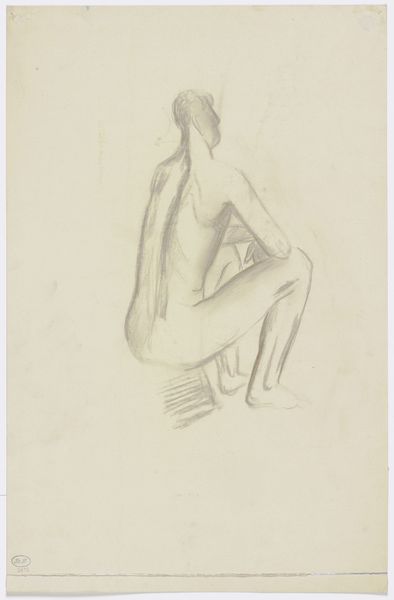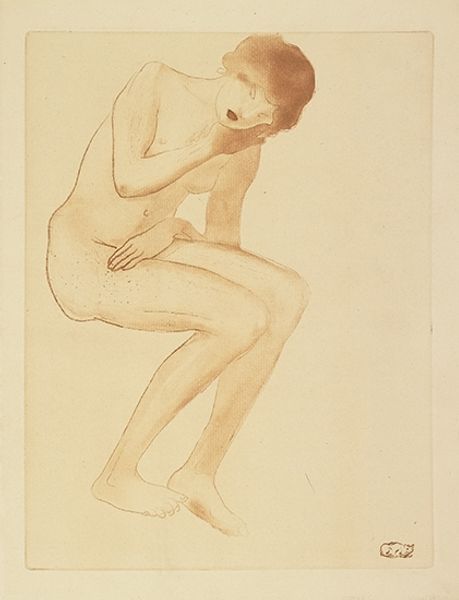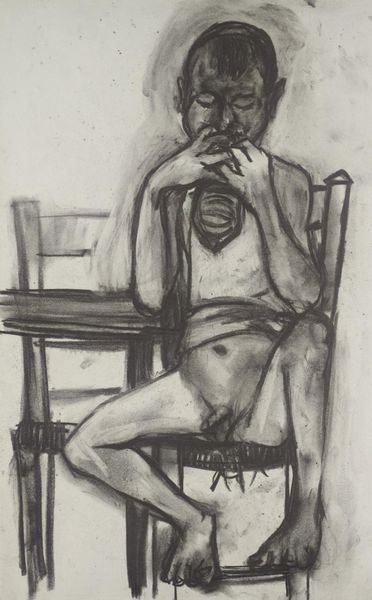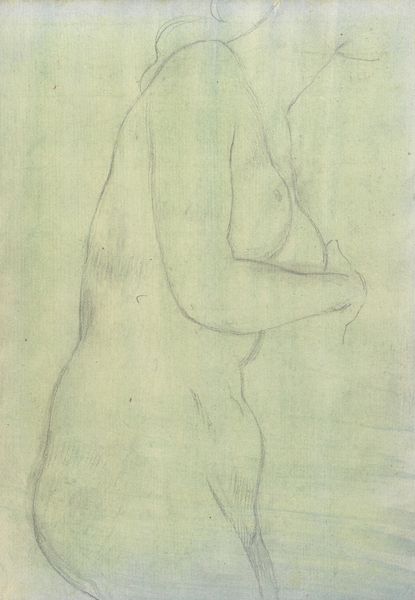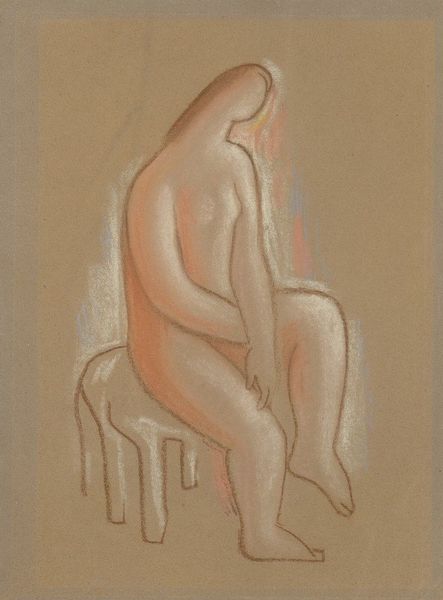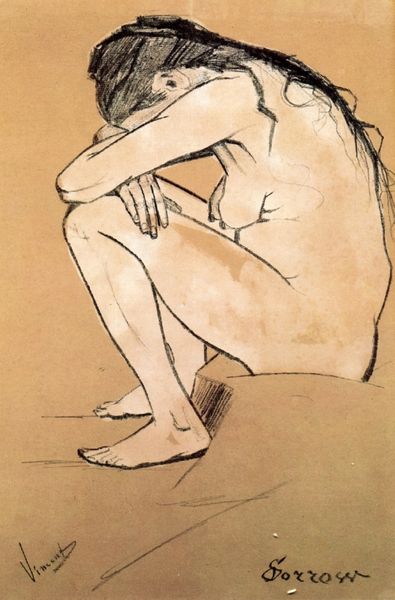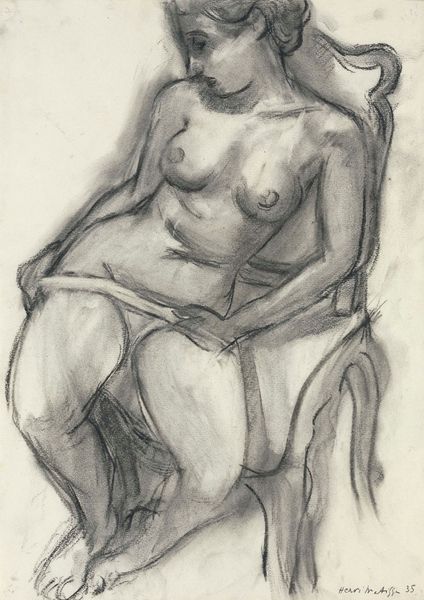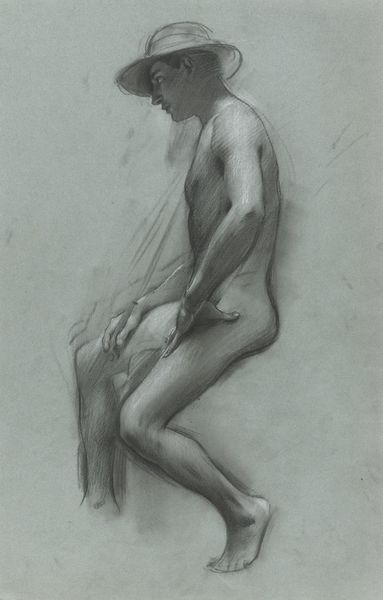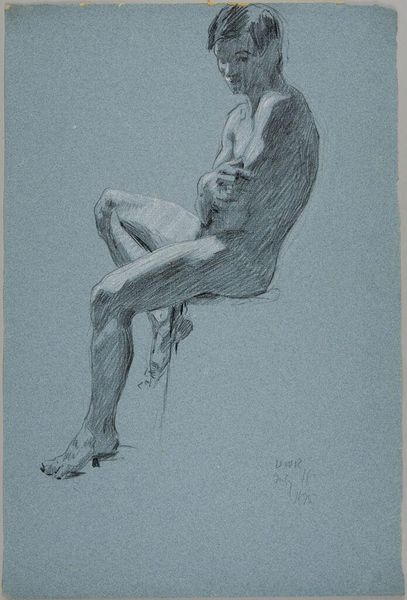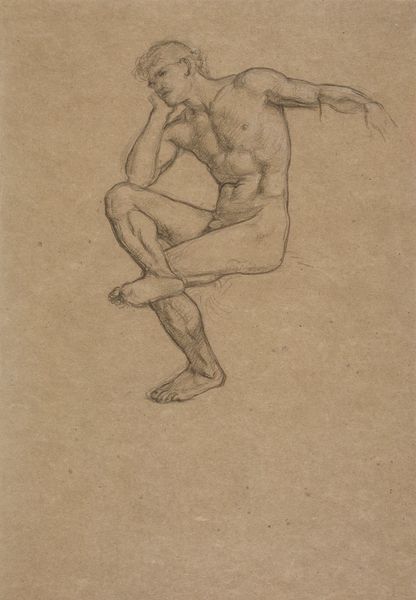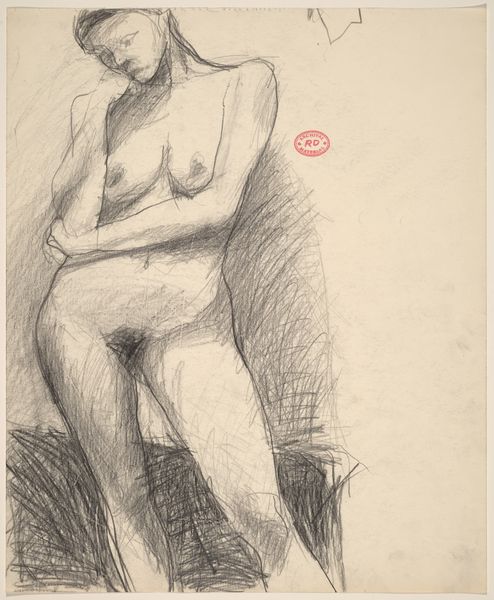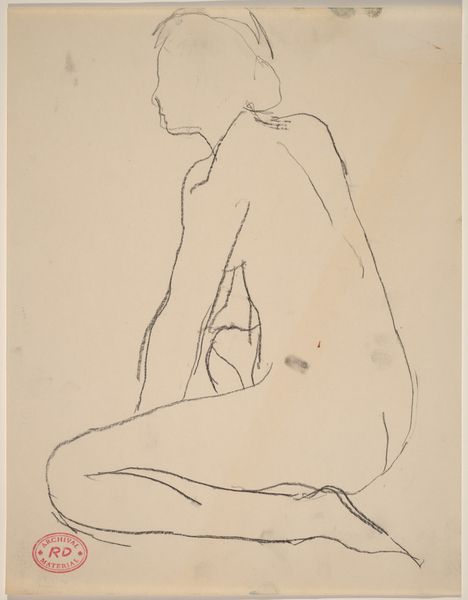
drawing, charcoal
#
drawing
#
charcoal drawing
#
portrait drawing
#
charcoal
#
academic-art
#
nude
#
realism
Copyright: Public domain US
Editor: So, this charcoal drawing, "Naked Model" by Adalbert Erdeli, created in 1914… it’s quite striking. I'm really drawn to the way the light and shadow create such depth, even though it seems so simple. How do you interpret this work? Curator: Well, first, consider the context of 1914. The rise of modernism was challenging traditional academic art. This piece, while clearly skilled, feels like a subtle negotiation with that shift. Do you see how the figure, while realistically rendered, is also presented in a rather anonymous, almost clinical way? Editor: I do notice she isn’t looking at the viewer, which does make it less personal. It is interesting it was rendered in the early twentieth century. Curator: Precisely! The nude form had, for centuries, been a site of intense social and political meaning – think of its use in reinforcing notions of beauty, power, and gender. By 1914, artists were increasingly questioning those established roles. Consider how the chair itself—ordinary, domestic—functions within this context. Is it simply a prop, or does it say something about the changing role of women in society? Editor: I guess I hadn't thought about the chair having meaning. I always associated these with models and figure studies in particular. Curator: Think about the social space of the studio at the time and how artists challenged conventions related to acceptable or "high art" subject matter. Even the very act of depicting a nude could be a statement, an inquiry into representation and social norms. Editor: That gives me a whole new perspective on a subject I considered so classic and straightforward! Thanks for opening my eyes. Curator: Absolutely! Seeing art through a historical lens always adds layers of understanding, showing how artists respond to and shape the world around them.
Comments
No comments
Be the first to comment and join the conversation on the ultimate creative platform.

